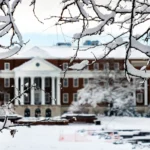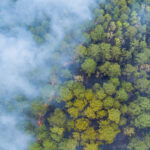ESSIC visiting research scientists Ralph Ferraro and Huan Meng, post-doctoral associate Jun Dong, faculty specialist Michael Folmer, associate research scientist Cezar Kongoli, and assistant research scientist Nai-Yu Wang have an article in Eos, which is published by the American Geophysical Union. The article, “Snowfall Rates from Satellite Data Help Weather Forecasters,” describes how NOAA satellite data is used to generate maps that provide information on snowfall rates during snowstorms. Snowfall rates are based on satellite observations of microwave radiation from cloud ice content and land and ocean surfaces. The maps display the relevant data for weather forecasters.





